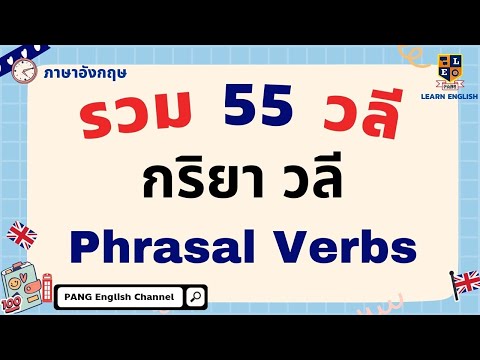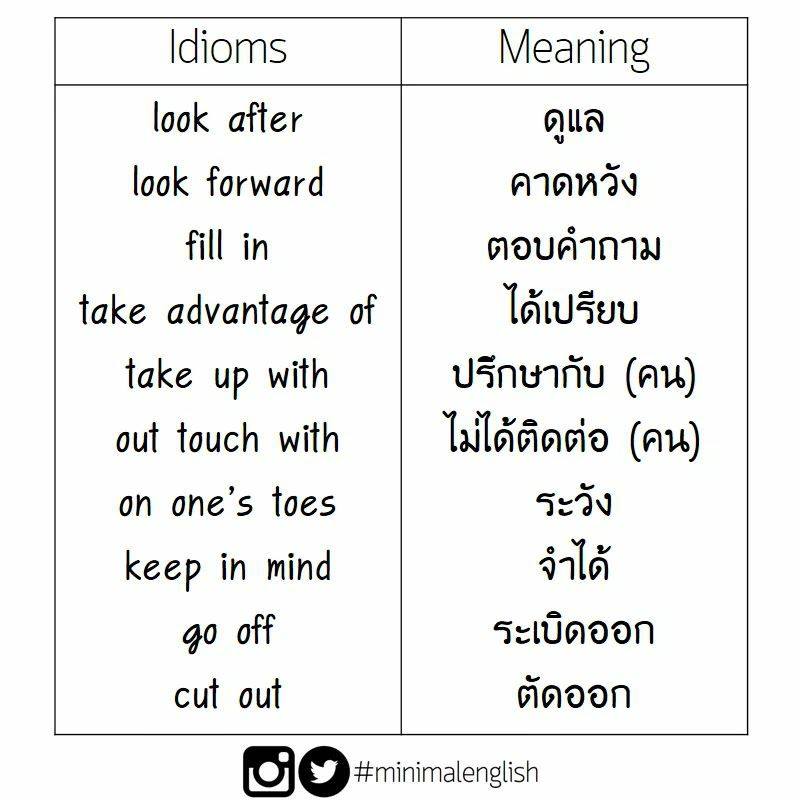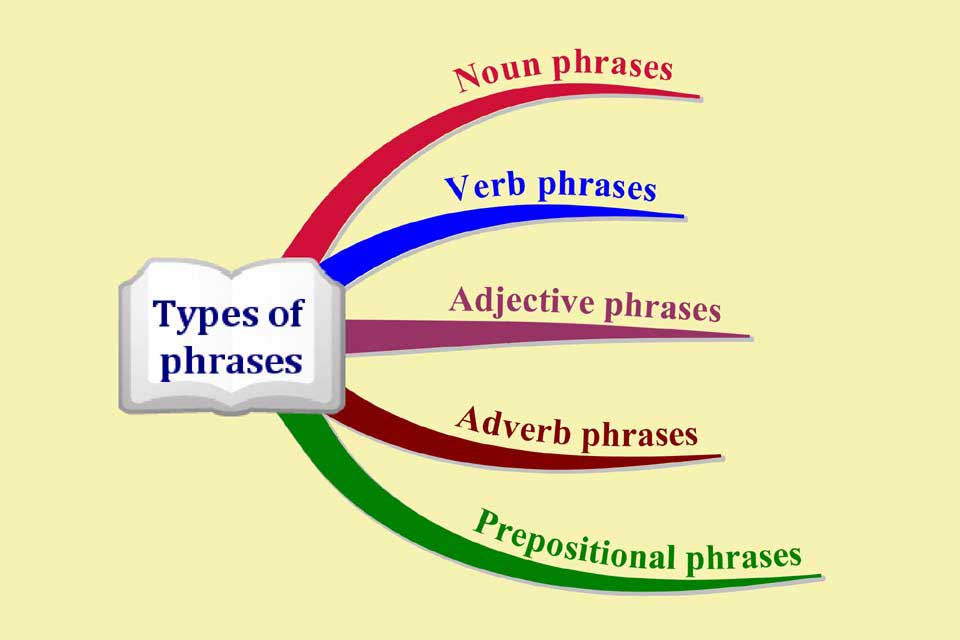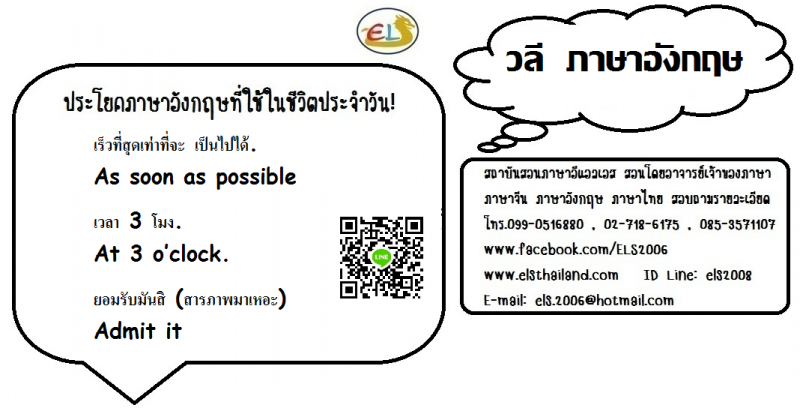รวม 55 วลีสั้นๆ ภาษาอังกฤษ | กริยาวลี ที่ฝรั่งใช้กันบ่อยมาก
วลี ภาษาอังกฤษคืออะไร
วลี ภาษาอังกฤษคือกลุ่มคำที่เชื่อมต่อกันมาเป็นประโยคย่อยๆ ซึ่งมักใช้ร่วมกันเพื่อสื่อความหมายให้ชัดเจนมากขึ้น โดยวลีอาจประกอบด้วยคำหนึ่งๆ หรือมากกว่านั้น ซึ่งรวมถึงคำนาม คำกริยา คำวิเศษณ์ และคำขยาย นอกจากนี้ วลียังอาจประกอบด้วยคำที่เป็นส่วนผสมที่อยู่ในรูปแบบของข้อความให้เกิดความหมายที่เข้าใจได้ง่ายและสมบูรณ์
ความหมายและลักษณะของวลี ภาษาอังกฤษ
วลี ภาษาอังกฤษมีหน้าที่สำคัญในการเติมความหมายให้กับประโยค ซึ่งช่วยเสริมสร้างความหมายให้กับคำศัพท์แต่ละคำที่อยู่ในประโยค โดยทำให้เกิดความหมายที่ถูกต้องและชัดเจน วลีประกอบด้วยส่วนประกอบต่างๆ เช่น คำนาม คำกริยา คำวิเศษณ์ และคำขยาย ซึ่งทำหน้าที่เสริมสร้างความหมายให้กับประโยคที่ถูกสร้างขึ้นมา นอกจากนี้ วลียังสามารถทำหน้าที่ของประโยคย่อย ที่สามารถนำมาใช้เป็นส่วนประกอบในประโยคใหญ่ขึ้นไปอีกด้วย
ต่างรูปแบบของวลี ภาษาอังกฤษ
วลี ภาษาอังกฤษมีหลายรูปแบบที่มีลักษณะแตกต่างกัน ซึ่งควรรู้จักและเข้าใจในแต่ละรูปแบบดังนี้:
- คำนาม (Noun Phrase): วลีที่ประกอบด้วยคำนามและคำขยาย ซึ่งใช้ในการกล่าวถึงบุคคล สัตว์ สิ่งของ หรือความคิดต่างๆ ที่มีอยู่
- คำกริยา (Verb Phrase): วลีที่ประกอบด้วยคำกริยาหรือคำกริยาช่องที่ ใช้ในการแสดงกระบวนการ การกระทำ หรือสภาพความเป็นอยู่
- คำวิเศษณ์ (Adjective Phrase): วลีที่ประกอบด้วยคำวิเศษณ์และคำขยาย ใช้ในการแสดงคุณลักษณะ ลักษณะ หรือสภาพความเป็นอยู่ของคำนาม
- คำขยาย (Adverb Phrase): วลีที่ประกอบด้วยคำขยาย ใช้ในการแสดงลักษณะของคำกริยา คำวิเศษณ์ หรือคำอื่นๆ ที่มีอยู่ในประโยค
- วลีคำสรรพนาม (Pronoun Phrase): วลีที่ประกอบด้วยคำสรรพนามและคำขยาย ใช้เพื่อแทนคำนามที่อยู่ในประโยคเพื่อลดความซ้ำซ้อน
- วลีคำเชื่อม (Conjunction Phrase):
คำสำคัญที่ผู้ใช้ค้นหา: วลี ภาษา อังกฤษ คือ วลีภาษาอังกฤษที่ใช้บ่อย, Participial phrase คือ, วลีคือ, Noun phrase คือ, Phrase ตัวอย่าง, Verb phrase คือ, Prepositional phrase คือ, Adjective phrase คือ
รูปภาพที่เกี่ยวข้องกับหัวข้อ วลี ภาษา อังกฤษ คือ

หมวดหมู่: Top 82 วลี ภาษา อังกฤษ คือ
ดูเพิ่มเติมที่นี่: cookkim.com
วลีภาษาอังกฤษที่ใช้บ่อย
วลีภาษาอังกฤษที่ใช้บ่อย (Common English Phrases): เรียนรู้และใช้ง่ายในชีวิตประจำวัน
คำนำ
ในยุคที่เรามีโอกาสเชื่อมต่อกับคนทั่วโลกได้ง่ายขึ้นด้วยเทคโนโลยีและการเดินทางที่สะดวกสบายมากขึ้น ภาษาอังกฤษกลับกลายเป็นภาษาที่สำคัญและน่าสนใจในการเรียนรู้ เสียงอันนุ่มนวลและความหมายที่คล้ายคลึงกันทำให้วลีภาษาอังกฤษนั้นเป็นที่นิยมในชีวิตประจำวันของคนหลายๆ คน ไม่ว่าจะเป็นในเชิงธุรกิจ การท่องเที่ยว หรือแม้กระทั่งในสื่อสังคมออนไลน์
ในบทความนี้ เราจะมาทำความรู้จักกับ “วลีภาษาอังกฤษที่ใช้บ่อย” ซึ่งเป็นคำหรือประโยคที่นิยมใช้ในภาษาอังกฤษในชีวิตประจำวัน จะเป็นคำกริยา คำนาม คำคุณศัพท์ หรืออื่นๆ ที่สามารถแสดงออกถึงความคิดเห็น ความรู้สึก และกระแสความคิดของคนในสถานการณ์ต่างๆ รวมถึงแนวทางในการใช้วลีเหล่านี้ให้ถูกต้องและเหมาะสม
เริ่มต้นใช้วลีภาษาอังกฤษที่ใช้บ่อย
- “Hello” และ “Hi”
- “Hello” และ “Hi” เป็นคำทักทายที่คุ้นเคยที่สุดในภาษาอังกฤษ ควรใช้เพื่อทักทายคนอย่างสุภาพเมื่อพบกันในสถานการณ์ที่เริ่มต้นเช่น การพบเพื่อนใหม่หรือคนที่ไม่คุ้นเคย คำทักทายเหล่านี้ช่วยสร้างบรรยากาศที่ดีและเปิดโอกาสในการสร้างความรู้สึกแบบเชิญชวน
- “How are you?”
- คำถามที่ใช้สอบถามสภาพอาการของผู้คน เป็นคำถามที่นิยมในการแสดงความห่วงใยและความเป็นมิตร คำตอบที่มักจะได้รับคือ “I’m fine, thank you” หรือ “I’m good, thanks” ซึ่งแสดงถึงสภาพอาการที่ดีของบุคคล
- “What’s your name?”
- เป็นคำถามที่ใช้สอบถามชื่อของผู้คนที่เราต้องการรู้จัก การระบุชื่อเป็นขั้นตอนแรกที่เราควรทำเมื่อต้องการเริ่มสร้างความรู้สึกในการสนทนากับคนใหม่ๆ
- “Nice to meet you.”
- ประโยคที่ใช้ในการแสดงความยินดีและความยินต้อนรับเมื่อพบกับคนใหม่ ควรใช้เพื่อแสดงความเป็นมิตรและการรับรู้ในการพบปะครั้งแรก
- “Thank you” และ “Thanks”
- “Thank you” และ “Thanks” เป็นคำขอบคุณที่ใช้บ่อยในภาษาอังกฤษ ควรใช้เมื่อต้องการแสดงความขอบคุณต่อคนอื่นๆ ที่ได้ให้ความช่วยเหลือ ความร่วมมือ หรือบริการต่างๆ
- “I’m sorry” หรือ “Excuse me”
- ใช้ในการขออ
Participial Phrase คือ
Participial Phrase คือ: A Comprehensive Guide
Introduction
In the Thai language, grammar plays a vital role in constructing clear and meaningful sentences. Among the various components of Thai grammar, the “Participial Phrase” (คำกริยาศัพท์) stands out as a versatile and powerful construct. Participial phrases add depth and complexity to sentences, allowing speakers and writers to convey a wealth of information succinctly. In this article, we will delve deep into the concept of participial phrases in Thai, exploring their structure, usage, and various examples to help learners and enthusiasts master this aspect of the language.
I. Understanding Participial Phrases (คำกริยาศัพท์)
A participial phrase is a group of words containing a verb’s participle form (รูปกริยาศัพท์) along with its modifiers. These phrases function as adjectives, adverbs, or even as part of compound verbs in Thai sentences. They provide additional information about the subject or the action, creating a more vivid and descriptive picture of the overall context.
II. Structure of Participial Phrases
The structure of a participial phrase in Thai is relatively straightforward. It consists of the following components:
-
Participle Verb (รูปกริยาศัพท์): This is the heart of the participial phrase. It is the verb form that acts as the foundation, either in the present participle (รูปกริยาศัพท์ปัจจุบัน) or past participle (รูปกริยาศัพท์อดีต).
-
Modifiers (คำบ่งบอก): These are words that accompany the participle verb to give more details or specifications about the subject or the action. Modifiers can be adjectives, adverbs, or other words that enhance the meaning of the phrase.
III. Usage of Participial Phrases
Participial phrases serve various purposes in Thai sentences. Let’s explore some common usages:
-
Adjectival Use: Participial phrases often function as adjectives to describe nouns or pronouns. They provide additional characteristics and qualities to the subject.
-
Adverbial Use: Participial phrases can also act as adverbs to modify verbs, adjectives, or other adverbs. They explain the manner, reason, or time of an action.
-
Compound Verbs: In some cases, participial phrases combine with main verbs to create compound verbs, adding complexity and depth to the sentence.
IV. Examples of Participial Phrases
Let’s examine some examples of participial phrases in different contexts:
-
Adjectival Use:
- ผู้หญิงที่ร้องเพลงดัง (The woman singing loudly)
- นักศึกษาที่มาจากต่างประเทศ (The students who come from different countries)
-
Adverbial Use:
- เด็กนักเรียนเดินเข้าโรงเรียนอย่างเร็ว (The students walk to school quickly)
- เสียงดนตรีที่เป็นที่ชื่นชอบ (The music that is loved by many)
-
Compound Verbs:
- เด็กที่เล่นวงจรปิดกำลังมองมา (The child looking at the closed circuit)
V. Common Mistakes to Avoid
While using participial phrases, learners may encounter some common mistakes. Here are a few to watch out for:
-
Ambiguous References: Ensure that the participial phrase clearly refers to the intended subject, avoiding confusion in the sentence.
-
Incorrect Verb Form: Make sure to use the appropriate participle verb form (รูปกริยาศัพท์) according to the context, either present or past participle.
VI. Tips for Mastering Participial Phrases
-
Practice, Practice, Practice: The more you practice using participial phrases in various contexts, the more proficient you will become.
-
Expand Vocabulary: A rich vocabulary will enable you to use diverse modifiers effectively in participial phrases.
FAQ (คำถามที่พบบ่อย)
1. What is the difference between a participle and a participial phrase?
- A participle (รูปกริยาศัพท์) is a verb form that can function as an adjective or part of a compound verb. On the other hand, a participial phrase (คำกริยาศัพท์) is a group of words containing a participle verb and its modifiers, acting as an adjective or adverb in a sentence.
2. Can participial phrases stand alone as complete sentences?
- No, participial phrases alone cannot form complete sentences. They require a subject or main clause to provide context and meaning.
3. Are participial phrases unique to Thai language?
- No, participial phrases are found in many languages, including English. They serve similar functions in conveying additional information about the subject or action.
4. How can I identify participial phrases in a sentence?
- Look for verb forms that end in -ing (รูปกริยาศัพท์ปัจจุบัน) or -ed (รูปกริยาศัพท์อดีต). These may indicate the presence of participial phrases in the sentence.
Conclusion
Participial phrases are valuable tools in the Thai language, offering a range of expressive possibilities to speakers and writers. By mastering their structure and usage, learners can enhance the clarity and richness of their sentences. As you continue to explore the intricacies of participial phrases, you will undoubtedly uncover new dimensions of communication in the Thai language. Happy learning!
พบใช่ 30 วลี ภาษา อังกฤษ คือ.


















































ลิงค์บทความ: วลี ภาษา อังกฤษ คือ.
ดูข้อมูลเพิ่มเติมเกี่ยวกับโพสต์หัวข้อนี้ วลี ภาษา อังกฤษ คือ.
- Phrase คืออะไร มีอะไรบ้าง เข้าใจพื้นฐานสำคัญของวลีภาษาอังกฤษ
- Phrase (วลี)
- Phrase (วลี) มีกี่ประเภท มีอะไรบ้าง ตัวอย่างประโยค – tonamorn.com
- Grammar: ทำความรู้จักลักษณะ หน้าที่ และการใช้วลี (Phrase) ใน …
- โครงสร้างของ
- 100++ วลีภาษาอังกฤษที่ใช้บ่อย ความหมายน่าสนใจ ไม่รู้ไม่ได้
- วลี แปลว่าอะไร ดูความหมาย ตัวอย่างประโยค หมายความว่า …
- Phrasal Verbs Get ที่ควรรู้ มีอะไรบ้าง?
- รวม 100 สำนวนและวลีภาษาอังกฤษ + ตัวอย่าง
ดูเพิ่มเติม: https://cookkim.com/category/investing blog